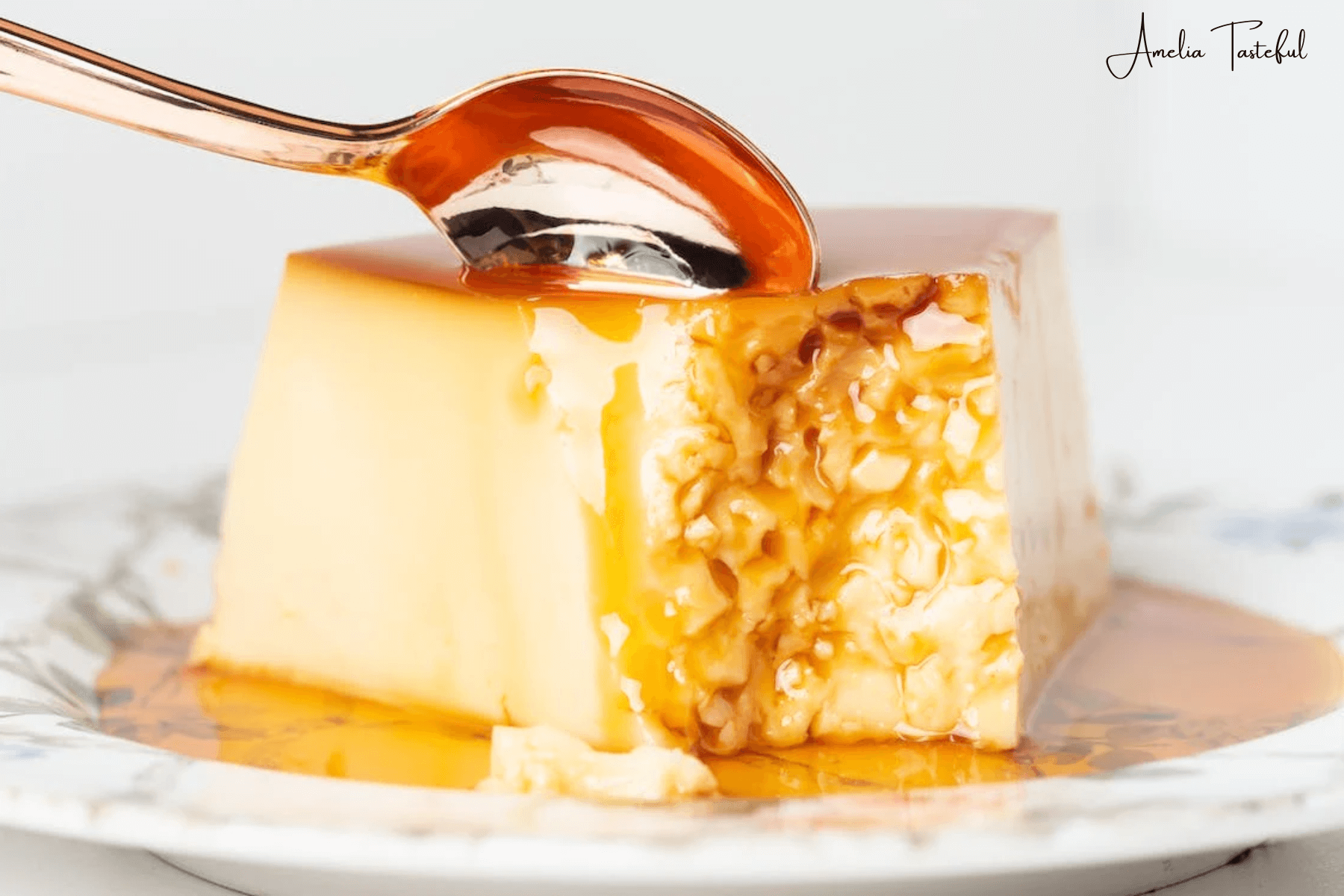What is the difference between a flan and a crème brûlée? This article explores the essence of these custard desserts, highlighting their silky textures and rich flavors. We examine their origins, key ingredients, cooking methods, and how they’re served, revealing what sets them apart. Whether you’re a culinary expert or a food enthusiast, this guide offers an in-depth look at flan and crème brûlée, enriched with FAQs and links to related recipes on Amelia’s Tasteful.
Introduction
Overview of Dessert Custards
Dessert custards are a pinnacle of indulgence, blending eggs, sugar, and dairy into a glossy, smooth texture. This blend showcases culinary artistry, where ingredient balance and precise technique create something extraordinary.
Importance of Understanding the Difference Between Flan and Crème Brûlée
Exploring custards reveals diverse forms and flavors, with flan and crème brûlée as standout examples. Their unique traits and origins offer distinct tastes. Learning their differences enriches our appreciation for dessert traditions, guiding culinary choices and ensuring authentic enjoyment.
What is Flan?
Origin and Cultural Significance
Flan’s history stretches from ancient Rome to Latin America, evolving from a savory dish to a celebrated sweet custard. It symbolizes tradition and festivity, especially in Spanish and Latin American cultures.
Key Ingredients and Variations
Flan’s simplicity, needing just eggs, sugar, and milk, allows for creative variations like Coconut Flan and Pumpkin Pie Flan. These adaptations add exotic or seasonal twists to the classic recipe.
Cooking Method and Presentation
Baked gently in a water bath, flan’s cooking method ensures a tender texture, with caramelized sugar adding a luscious touch. It’s typically served chilled, often garnished with fruits or whipped cream for extra flavor and texture.
What is Crème Brûlée?
Historical Background
Crème brûlée, with its disputed origins, is a custard dessert topped with caramelized sugar. Known for its creamy base and brittle top, it’s a classic in French cuisine.
Composition and Flavors
This dessert’s rich flavor comes from a mix of egg yolks, sugar, and cream, often infused with vanilla. Variations like Eggnog Crème Brûlée add festive flavors.
Unique Features: The Caramelized Sugar Top
Crème brûlée’s signature is its caramelized sugar crust, offering a textural contrast to the smooth custard beneath. It’s served slightly chilled, enhancing the sensory experience.
Comparing Flan and Crème Brûlée
These desserts differ in texture, flavor, and presentation, reflecting diverse culinary traditions. Flan is known for its caramel sauce and smooth texture, while crème brûlée features a rich custard with a caramelized top. Each dessert’s unique qualities offer distinct culinary experiences.
FAQs
What are the main differences in ingredients between flan and crème brûlée?
Primarily, flan and crème brûlée differ in their dairy and egg components. Flan often combines whole eggs with milk, and occasionally cream, leading to a lighter, more gelatinous texture. Conversely, crème brûlée luxuriates in heavy cream and egg yolks, crafting a richer, smoother custard. Both desserts incorporate sugar, yet crème brûlée uniquely features an additional caramelized sugar layer.
Can flan or crème brûlée be made without dairy?
Indeed, both flan and crème brûlée can transition to dairy-free delights. By substituting traditional dairy with plant-based alternatives like coconut milk, almond milk, or cashew cream, these desserts can embrace a delightful twist. This adaptation not only caters to dietary preferences but also introduces a novel taste profile.
How do you achieve the perfect caramelized top on a crème brûlée?
To perfect crème brûlée’s caramelized top, start by evenly distributing a thin sugar layer over the custard. Then, employ a kitchen torch to melt and brown the sugar, achieving a crisp, golden crust. Alternatively, for those lacking a torch, broiling the ramekins briefly can yield a similar result. Vigilance is key to avoid burning, aiming for a rich amber hue.
Are there any quick versions of these desserts for a busy cook?
Certainly, for those pressed for time, expedited versions of both desserts are available. Microwave crème brûlée presents a swift, yet sophisticated option, ready in mere minutes. Likewise, flan can be simplified using condensed and evaporated milk, significantly cutting down preparation time for a faster refrigerator set. These shortcuts offer busy cooks the pleasure of crafting homemade desserts without the lengthy prep work.
Further Reading and Resources
Explore the delightful world of custard desserts with these enriching resources:
- Greatist – Creme Brulee vs. Flan: Head-to-Head Comparison and How to Make Both: Dive into a comprehensive comparison of these desserts. Discover recipes and learn about their unique aspects here.
- Tastemade – Food Fight: Crème Brûlée vs Flan: Join the culinary showdown between these two favorites. Uncover the distinctive features of each here.
- Food NDTV – A Quick Guide To The Difference Between Flan, Panna Cotta, And Crème Brûlée: Broaden your dessert horizons. This guide discusses the nuances of flan and crème brûlée, and introduces panna cotta here.
Other Amelia Recipes
Amelia’s Tasteful offers recipes that pair well with flan and crème brûlée:
- Jelly Flan Recipe Guide: A unique take on traditional flan, infused with jelly for an interesting texture. Explore the recipe here.
- Pudding vs. Flan: Culinary Comparison: Understand the differences between pudding and flan, enriching your culinary knowledge. Read more here.
- American Equivalent of Flan: Discover how flan is adapted in American cuisine, embracing local flavors. Find out more here.
These resources and recipes invite you to broaden your culinary horizons and experiment with new flavors and techniques.


